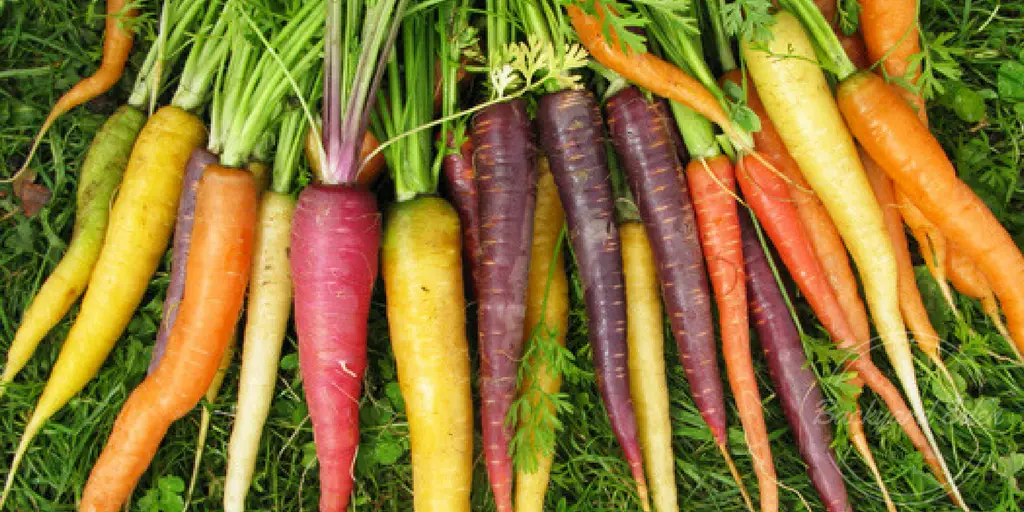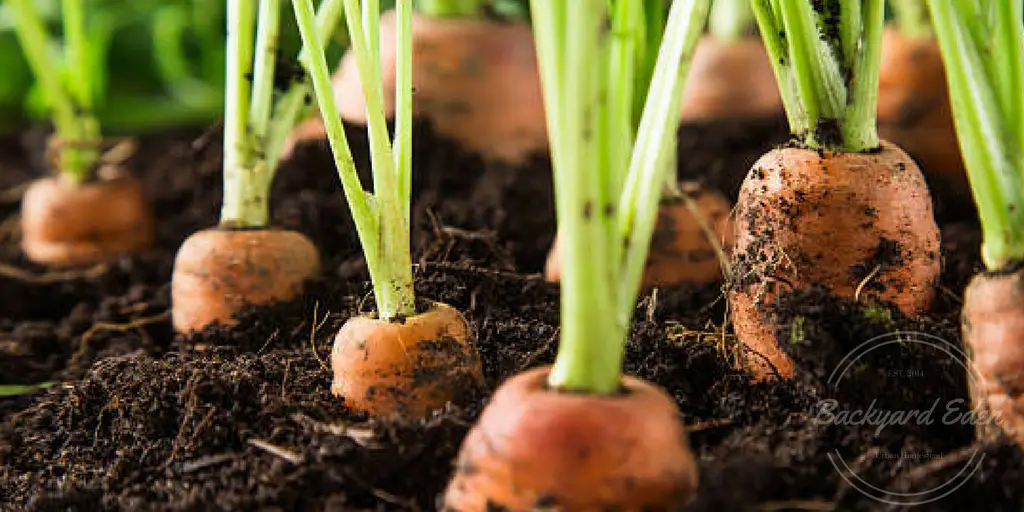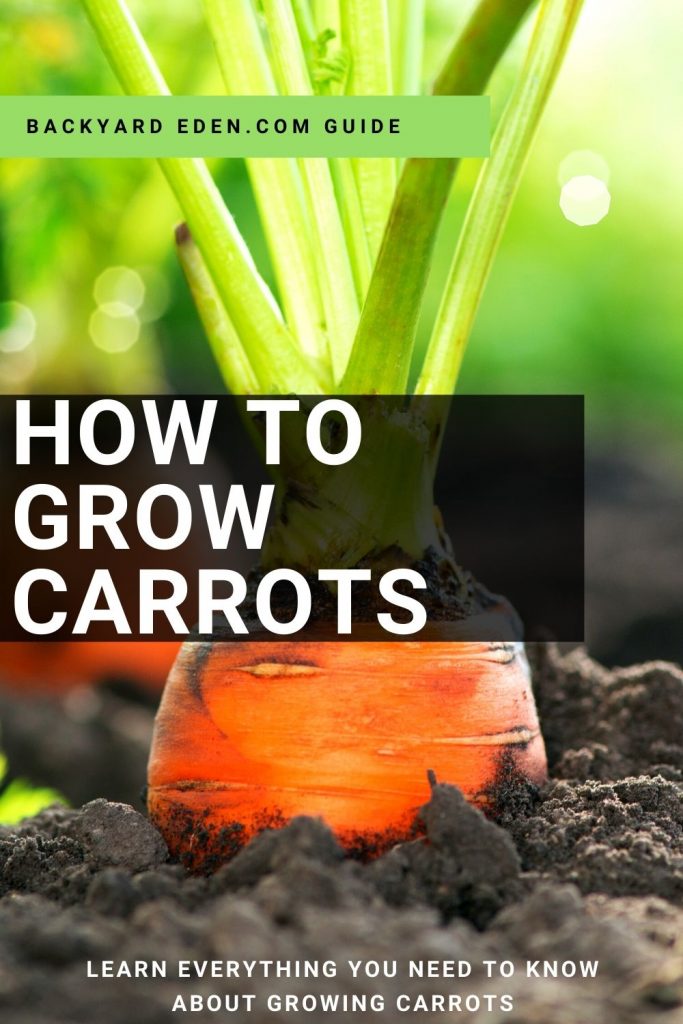How to Grow Carrots
By growing varieties suited to your soil, you can grow carrots in spring and fall, and the fall carrots can be left in the ground for harvesting in early winter; providing you with carrots all year round.
Learn how to grow carrots with this helpful guide. Farm fresh, sweet, and delicious carrots that can’t be found in supermarkets are among the best varieties of vegetables that can be grown in home gardens.
Traditional or Unique?
Orange carrots are the traditional standard, but you can try planting white, yellow, crimson, or even purple carrots, too. More important than color, though, is choosing the right root size and shape to suit your soil.
Carrots do vary in size and shape by type, and there are five major categories. Ball-type, Chantenay, and Danvers carrots have blocky shapes that can handle heavy or shallow soil, while slender Nantes and Imperator carrots need deep, loose soil.
All types are available in early and late cultivars; many are disease-and crack-resistant. Some catalogs don’t describe how to plant carrots by type but will point out which cultivars do better in heavy or poor soil.
How to Grow Carrots
To produce the best crop possible, double-dig your planting area or build up a raised bed. Loose, rock-free soil is the goal. If you have heavy soil, add plenty of mature compost. They will take 1 to 3 weeks to sprout (they germinate more slowly in cold soil than in warm).

Therefore, mix in a few quick-growing radish seeds to mark the rows. Cover with ¼ to ½ inch of screened compost, potting mix, or sand—a little more in warm, dry areas—to make it easier for the delicate seedlings to emerge. Water gently to avoid washing seeds away; keep the soil continuously moist for best germination.
When can I plant carrots outside?
Start sowing carrot seed 2-3 weeks before the last expected frost; plant again every 2 to 3 weeks after that. Most varieties take 70 to 80 days to mature, sow your last planting 2 to 3 months before the first expected fall frost.
In Zone 8 and warmer, most people say to plant carrots in fall or winter because they do not do well in hot weather but I have had great success planting carrots all throughout the year.
What is the best month to plant carrots?
They prefer cooler weather so growing carrots in Spring is recommended but I have been successful in the hot months as well.
Can carrots be grown all year round?
Having an abundance of carrots is awesome. I do it by growing carrots all year round. Sowing summer carrots in July will give you a nice harvest of tender little carrots in late fall.
I also plant them in mid to late fall and let them grow throughout the winter months for an early spring harvest.
Should I soak carrot seeds before planting?
Carrot seeds are slow sometimes slow to germinate, but you can speed things up a bit by getting the seeds ready indoors. Starting three to four days before you plan to sow them, soak carrot seeds in water for an hour, and then transfer them to a damp paper towel. Plant the primed seeds within five days.
How long do carrot seeds take to germinate?
Because carrot seeds usually take anywhere from 14 to 21 days to sprout, many gardeners mix a few radish seeds, which sprout quickly, with carrot seeds to mark the row.
Sowing radish seeds along with your carrots also gives you a quick crop that will be ready to harvest long before the carrots. This makes the most of your garden area.
Why won’t my carrot seeds germinate?
Carrots are slow to germinate, but they are even slower and sometimes won’t sprout at all if the soil temperatures are too low. … Since the tiny seeds are sown only ½” deep, it is essential to keep the soil moist through the long germination period. They will die if the top layer dries out or crusts over.
Bonus Tip for Germinating Carrot Seeds
Moisture is the key to germinating carrots. By keeping the surface of the soil where you planted your carrots moist but not overly wet you will greatly improve germination. Using this method is how I grow carrots successfully in Texas in the summer.
Can you germinate carrot seeds in paper towel?
Place your carrot seeds 2 inches apart across the whole paper towel until it’s covered. You’ll plant about 20-25 seeds per paper towel. As soon as the seeds have germinated and have a tiny root on them you can take the piece of cardboard and paper towel outside.
How long do carrots take to grow?
The short answer is 16 weeks.
Growing carrots generally takes between 12-16 weeks after sowing but this can vary based on a few things. The weather, soil moisture, and other factors can affect germination. You can begin to harvest the carrots as soon as they are big enough for you to use. You shouldn’t aim for the largest carrots because waiting too long for them to get bigger will affect their flavor.
How to Grow Carrots Guidelines:
Thin to 1 inch apart when the tops are 2 inches tall. Make sure to be thorough because crowded carrots will produce crooked roots. Thin them again 2 weeks later to 3 to 4 inches apart.
As the seedlings develop, gradually apply mulch to maintain an even moisture level and reduce weed problems. It’s best never to let young carrot plants dry out. However, if the soil dries out completely between watering times, gradually re-moisten the bed over a period of days; a sudden drenching may cause the roots to split.
Carrots feeder roots are easily damaged, so hand pull any weeds that push through the mulch, or cut them off just below the soil surface. Cover the crown of carrots, as they push up through the soil as they mature, with mulch or soil to prevent them from becoming green and bitter.
What is the best fertilizer for carrots?
Carrots should be fertilized when the tops have reached 3 inches tall. A granular type fertilizer will work well if used in moderation. The only thing about a granular fertilizer is that the nutrients are readily available to the plants. Choose a fertilizer that has little nitrogen and more potassium and phosphate – 0-10-10 or 5-15-15 will work well.
Problems
The biggest threats to carrots are four-footed critters such as deer, gophers, woodchucks, and rabbits. There are some rather simple ways to keep animal pests out of the garden. Check out our Pinterest for some ideas. Otherwise, carrots are fairly problem-free.
Carrot Pests
Since carrots are root crops, soil-dwelling pests such as wireworms and vegetable weevils have the most direct effect on product quality. Armyworms, however, may cause indirect injury to the taproot by cutting stems and/or consuming foliage above ground.
Keep an eye out—particularly in the Northwest—for carrot rust flies, which look like small green houseflies with yellow heads and red eyes. Their eggs hatch into whitish larvae that burrow into roots. Infested roots turn dark red and the leaves black.
Infestations usually occur in the early spring, so one solution is to delay planting until early summer when damage is less likely. Or cover plants with a floating row cover to keep flies away.
Worms
Parsleyworms are green caterpillars with black stripes, white or yellow dots, and little orange horns. They feed on the foliage of carrots, but they are the larval stage of black swallowtail butterflies, so if you spot them on your carrots, try not to kill them. Instead, transfer them to carrot-family weeds such as Queen Anne’s lace, and watch for chrysalises to form, and later, beautiful butterflies!
What is eating my carrots?
Adult weevils, which are beetles with well-developed snouts, and their larvae feed on all parts of carrot plants. Vegetable weevils in their larval stage are about 1/3 inch long, green, worm-like creatures that feed on carrot roots. Chewed carrot leaves could be a sign of adult weevil feeding.
How do you protect carrots from pests?
- Sow carrot seeds out to avoid thinning the seedlings. Thinning the plants can attracted nearby pest insects so try not to disturb the carrots.
- Do some research and find out when the pest pressure is at its highest. For me, late sown carrots (after mid-May) avoid the early pests.
- Protect vulnerable crops by covering the plants with insect-proof netting otherwise adult carrot flies may emerge within the protected crop from overwintered pupae in the soil
- There are multiple different species of beneficial nematodes that are available by mail order from biological control suppliers; for spring treatment Steinernema feltiae and for summer treatment S. carpocapsae.
How do you know when to pick carrots from your garden?
Carrots should be ready for harvest about 60-80 days after the seeds germinate, depending on the variety. The tops of the carrot roots will begin to emerge from the soil. They will also be vibrant in color.
How to Harvest Carrots
Carrots become tastier as they grow. You can start harvesting as soon as the carrots are big enough to eat, or leave them all to mature for a single harvest.
Dig your winter storage crop before the first frost on a day when the soil is moist but the air is dry.
Since spading forks tend to bruise roots, hand-pull them; loosen the soil with a trowel before you pull. Watering the bed before harvesting softens the soil and makes pulling easier.

How to Store Carrots
To save harvested carrots for winter use, prepare them by twisting off the tops and removing excess soil, but don’t wash them. Layer undamaged roots (so they’re not touching) with damp sand or peat in boxes topped with straw. Or store your fall carrot crop right in the garden by mulching the bed with several inches of dry leaves or straw.
In Conclusion
Once you learn how to grow carrots, you’ll get to enjoy them both fresh and cooked. Get out there and start growing some carrots in fun shapes or colors. Once you start, you will not be able to stop growing these delicious and stunning vegetables.
If you like this article on how to grow carrots, please share it on social media and with friends.
Also, check out our article on 5 Tips For Growing Carrots in Raised Beds or Top 10 Tomato varieties to grow in your garden!
Be sure to Like us on Facebook and follow us on Instagram, Twitter, and Pinterest!






